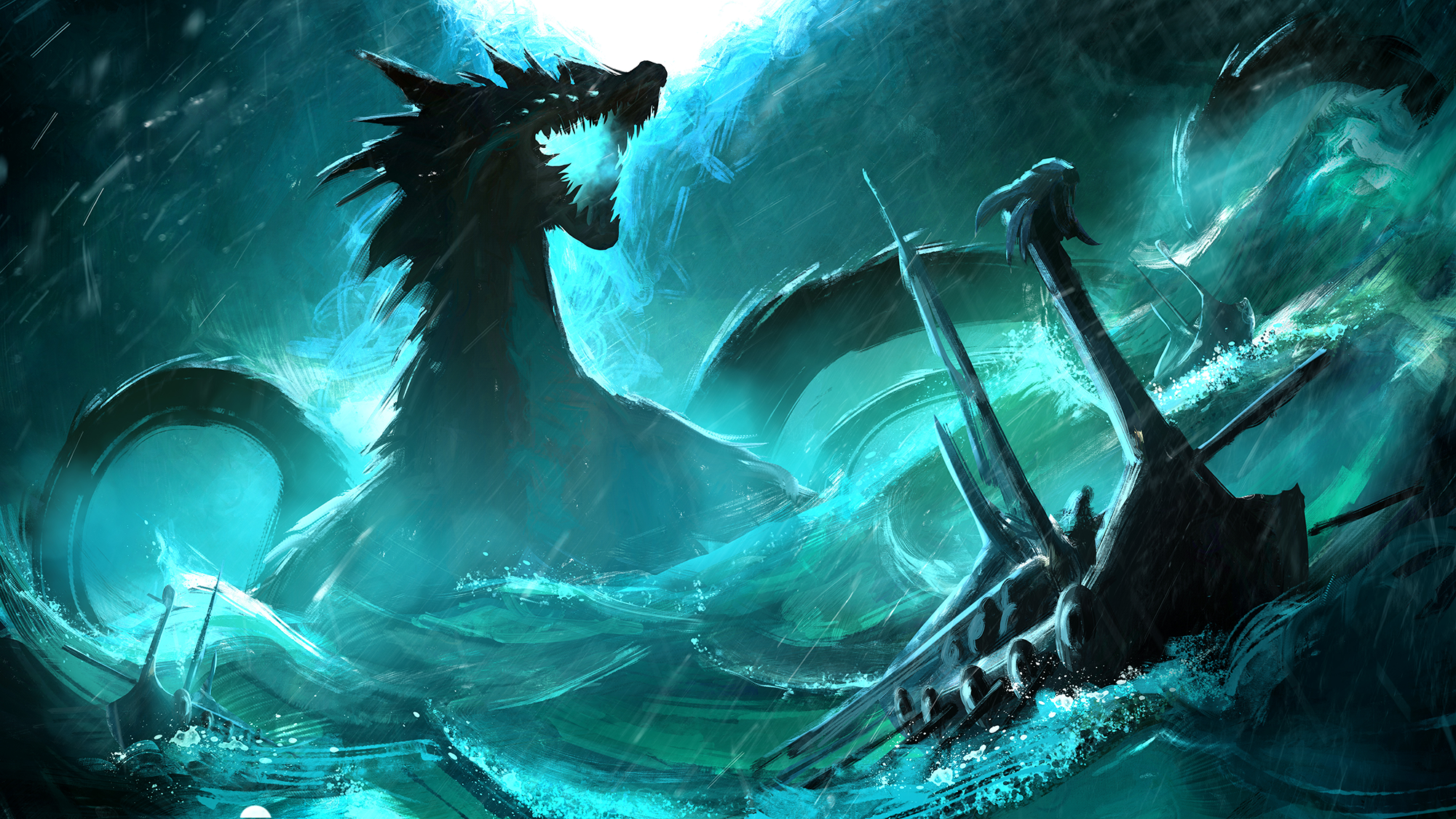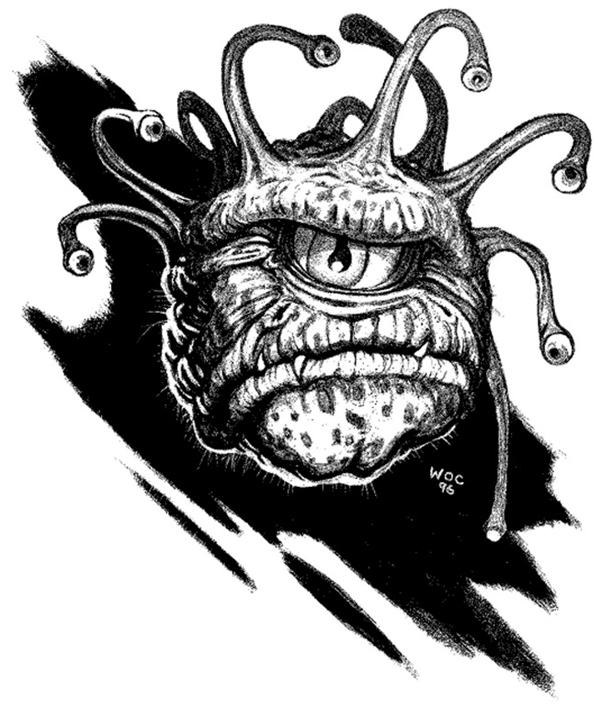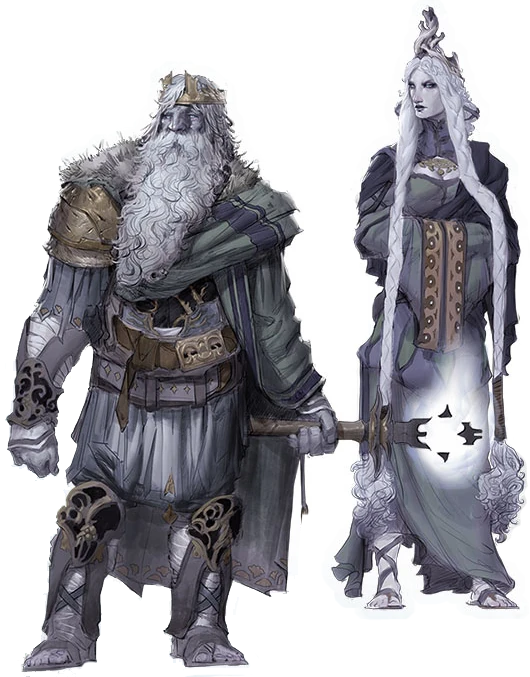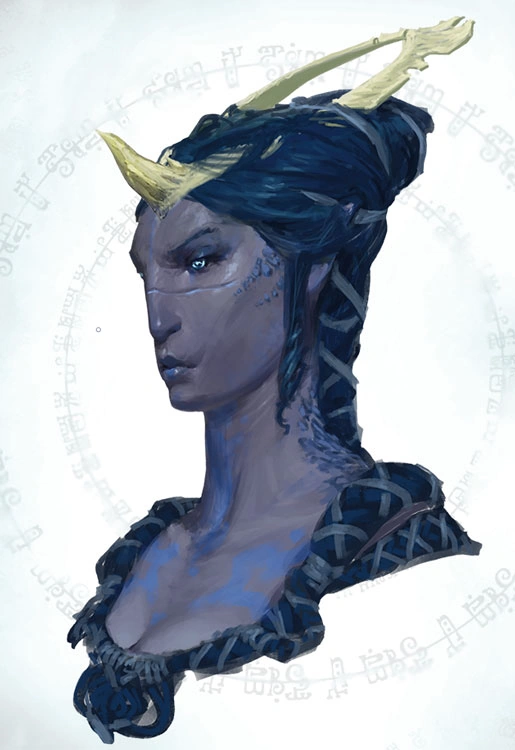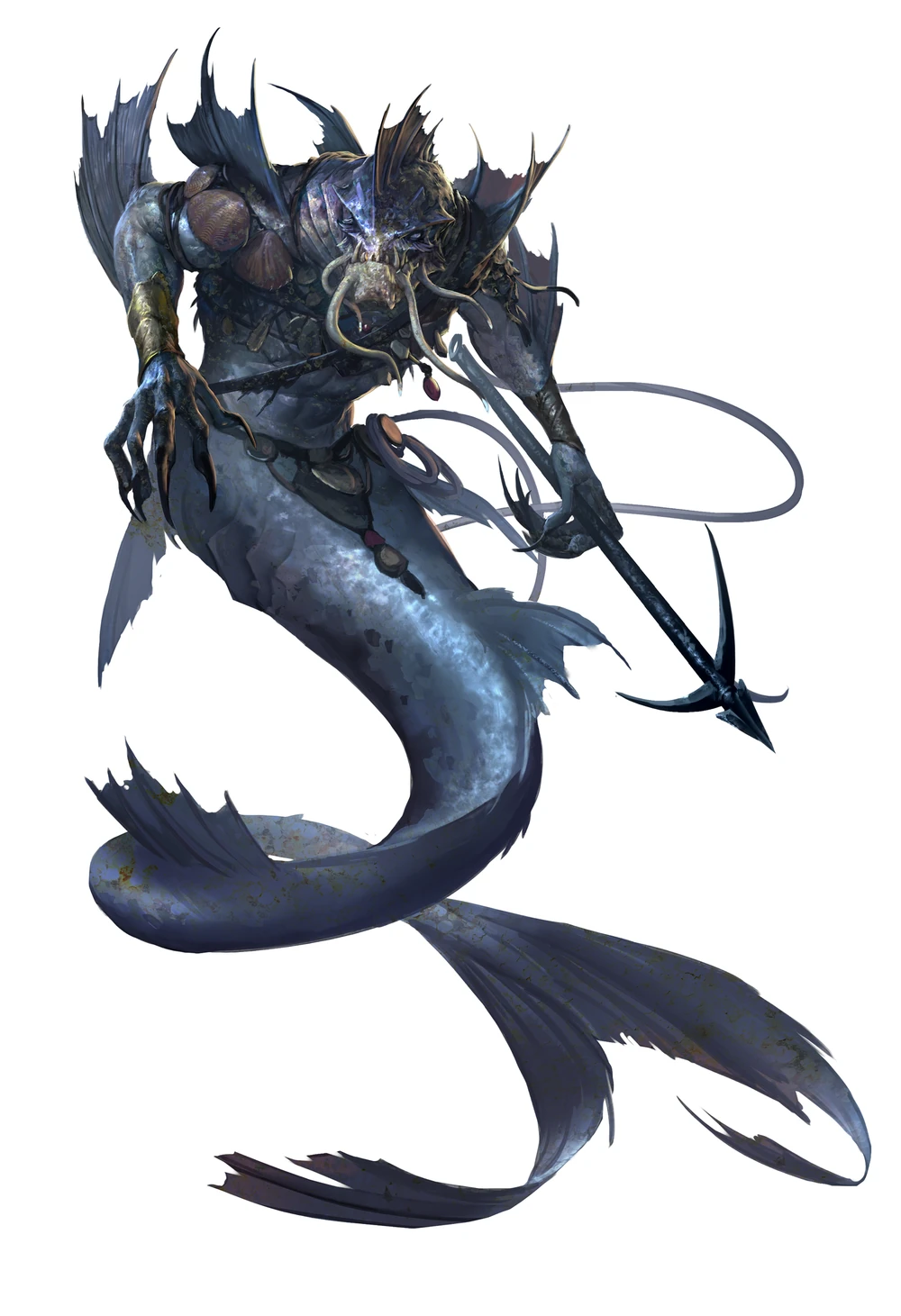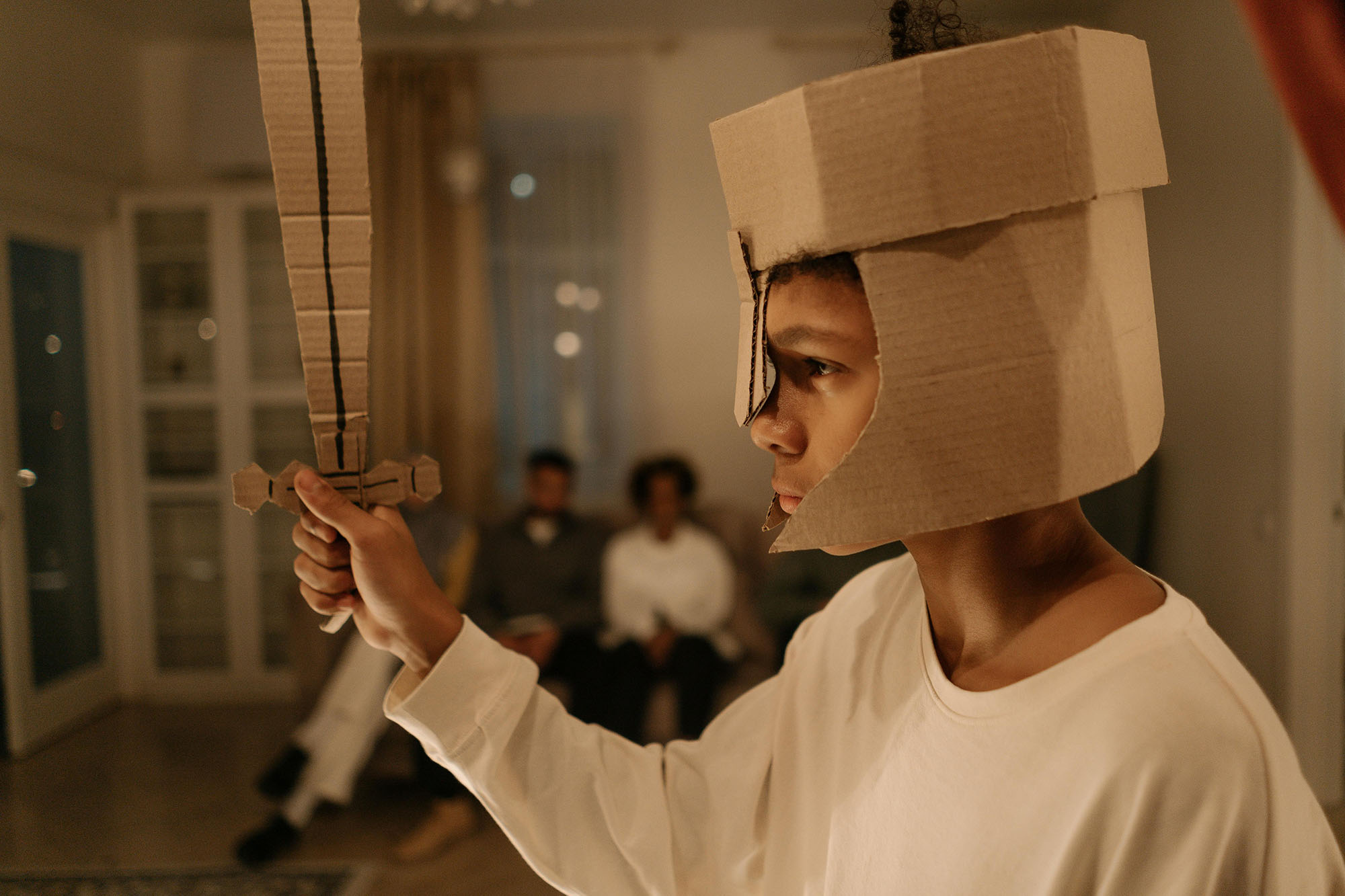To clearly see how the PCs can rescue Hekaton, we need a few key insights.
First, finding Hekaton is not the end of the campaign. For the reasons we’ve previously discussed, and which we’ll take an in-depth look at in Part 5, Hekaton’s disappearance is not the reason the Ordning is broken, nor will returning him to power restore the Ordning. Therefore, saving Hekaton will not end the campaign.
Importantly, this also means that solving Hekaton’s disappearance doesn’t need to be positioned as the end of the campaign: We don’t need to stop the PCs from “prematurely” solving the mystery and ending the campaign early, which will conveniently make it much easier for us to design a robust scenario for solving it.
So if we shouldn’t think of this as the end of the campaign, how should we think about it? Basically, on par with the other giant factions. “Solving the problem of the storm giants” will likely require a different solution than “solving the problem of the hill giants,” but it slots into the same “there’s something wrong with the giants and it needs to be fixed” structure.
Second, the PCs are not assigned to find Hekaton. Or, at least, they don’t need to be. Maybe they journey to Maelstrom, find a way to befriend Serissa, and she asks of them a boon to prove that not all small-folk are treacherous. Or maybe they’ll end up working for a faction and you could have them order the PCs to rescue Hekaton.
It’s more likely, however, that the PCs will simply discover that Hekaton is missing and then decide to deal with that situation themselves. Or they’ll report it to someone and the response is for that person or faction to ask them to look into it further. Either way, the impetus of action is flowing from the players.
Third, it’s the investigation of the Kraken Society that reveals the plot to kidnap Hekaton, rather than an investigation into Hekaton’s disappearance that reveals the Society. This will probably make more sense as we dive into the specific structure of the remixed investigation, but the key insight is that if the storm giants had been able to find any good leads at the crime scene, then they would already be pursuing those leads, not sitting around for months until a random group of small-folk showed up at their doorstep.
Therefore, logically, if you start from, “Hekaton is missing! How do we find him?” there aren’t any good leads.
The reason the PCs can be the ones to solve this is because, structurally, they approach the problem from a completely different direction.
THE BASIC PLAN
The Kraken Society addendum of the Remix provides a full breakdown of the organization. We’re going to break that organization into separate nodes, and then we’re going to classify those nodes as being either Involved (in the Hekaton conspiracy), Uninvolved, or Distant (and, therefore, unlikely to be encountered by the PCs).
INVOLVED
- Waterdeep – Skum Lord
- Neverwinter – Reefkin
- Yartar – Lord Drylund
UNINVOLVED
- Luskan
- Thornhold
- Dessarin Valley – Ghald & Unferth
DISTANT
- Caer Westphal (in the Moonshae Isles)
- Purple Rocks
- Ascarle
For the moment, let’s discard the Distant nodes. The remaining nodes, whether Involved or Uninvolved, can all be encountered by the PCs during the Phase 3 pointcrawl. Any one of these, when encountered, therefore becomes the PCs’ entry point into the Kraken Society investigation.
In each Uninvolved node, include clues pointing to:
- One or more Involved nodes.
- One or more Uninvolved nodes.
In each Involved node, include clues pointing to:
- Optional: One or more Uninvolved nodes.
- The other two Involved nodes.
- The Morkoth and how the PCs can locate it. (See below.)
And we’re done. The PCs can encounter one or more Kraken Society nodes while traveling across the Sword Coast and/or Savage Frontier, then follow the clues they find until they reach Hekaton. (Potentially unraveling krakenar operations as they go.)
THE LUSKAN AGENDA
To include Luskan on the list of Kraken Society nodes above, we’re presuming that there’s some fresh operation afoot there to reestablish the Society’s presence in the City of Sails.
It’s possible that this operation was under the command of Tholtz Daggerdark (SKT, p. 221), who we might characterize as a member of the Arcane Brotherhood. Daggerdark is now the captain of the Morkoth… perhaps the ship was built in the shipyards of Luskan? And the Kraken Society’s current scheme might have something to do with those shipyards, too?
FINDING THE MORKOTH
The basic concept here is that the Morkoth is sailing aimlessly through the Trackless Sea in the vicinity of the Purple Rocks, loaded up with wards that will prevent divination spells from revealing its location or the location of anyone or anything onboard.
This scenario is fundamentally sound, but it obviously means that the PCs need to (a) learn that Hekaton is onboard the Morkoth and (b) figure how to actually locate the Morkoth.
In the book, there’s one method for doing this: Drylund tells the PCs that the Morkoth is in the Trackless Sea and then the PCs just sail around randomly hoping they bump into it.
This option is not particularly compelling, and since it feels pretty hopeless unless you know that The Plot™ is going to deliver you to the ship, you may end up in a situation where the players just won’t go to the Trackless Sea because they’ll be convinced they need more information before they can succeed.
With that being said, keeping “we know the ship is somewhere in the Trackless Sea, so let’s just sail around and see if we can spot it” as a backstop option isn’t a bad idea. Fortunately, there are also some other options we could use:
- The PCs discover navigational charts indicating where the Morkoth will be so that they can intercept it. The most logical reason for these charts existing is that someone in the Kraken Society has a reason for periodically intercepting the Morkoth; e.g., to deliver fresh supplies.
- Alternatively, the PCs discover a beacon designed specifically to pierce the wards around the Morkoth and allow a ship to find it. (Probably for similar reasons to the navigational charts. Or perhaps the ritual which wards the Morkoth even from divine eyes actually requires the creation of the item as a lynchpin for the spell.)
- The PCs access the kraken’s lighthouse. This powerful psionic artifact is attuned to kraken’s compasses, which are carried by ships and undersea agents loyal to Slarkethrel. The system allows for hyper-accurate navigation, but also allows those in control of the lighthouse to keep an eye on everyone using the system. The Morkoth is using a kraken’s compass to avoid other ships in the region, and it’s a key weakness in its wards.
- There’s a permanent teleportation circle onboard the Morkoth. If the PCs can learn the sigil sequence for this circle, they can teleport straight to the ship.
You can pick whichever one of these sounds most compelling to you, and have the clues in the Involved nodes point to it.
Alternatively, they could ALL be true, with each Involved node having one of them as an option. There is a point, though, where a superfluity of options will make the Kraken Society feel childishly incompetent in their efforts to secure the Morkoth, which will also cheapen the players’ sense of accomplishing in conquering it.
So what I would recommend is picking the one you like best, putting it at Purple Rocks (so that the PCs have to go into the heart of the creepy krakenar cult), and then putting clues in all of the Involved nodes pointing to Purple Rocks.
With this done, you’ll have woven all of the Kraken Society nodes together, collectively pointed them through the Three Clue Rule at the Morkoth, and created multiple entry points the PCs can use to enter this knot of nodes and begin exploring them.
You’re good to go.

